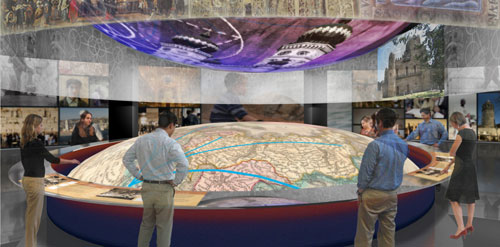Abba Kovner, a ghetto fighter in Lithuania who came to Israel and became a great poet, named the museum he conceived for the founder and former president of the World Jewish Congress. When Beit Hatfutsot opened its doors in 1978, it was considered one of the world's most innovative historical museums in its technology and design.
The museum boasted more than 400,000 visitors a year. And then time passed, the new-fangled technology became obsolete, the theme of the museum became outdated and the design of the complex seemed gloomy.
In 1995, the museum temporarily closed its doors as the number of annual visitors dropped to 78,000. The institution was saved by former Tel Aviv Mayor Shlomo Lahat, who managed to get then-Prime Minister Ariel Sharon to stay its closure.
In 2005, the Israeli Knesset passed the Beit Hatfutsot Law that defines the museum as "the National Center for Jewish communities in Israel and around the world." The Knesset also ensured it an annual budget from state coffers.
Two years later, the Beit Hatfutsot Renewal Program began with the inauguration of a new database system to upgrade the massive world-renowned databases of Jewish genealogy, communities, family names, visual documentation, films and music. In 2008, a new large lobby level was opened with three exhibition halls, two auditoriums, a café, gift shop and multimedia center.
In 2009, Armoni began traveling the world to see the best in museum design. He and Beit Hatfutsot's board and international steering committee chose Patrick Gallagher, president and founder of Gallagher & Associates, an international professional design firm, to redo Beit Hatfutsot's core exhibition.
"We are convinced that Gallagher's vast international experience as a top-tier museum designer will propel Beit Hatfutsot into the 21st century, making it a cutting-edge museum that tells the ongoing, remarkable story of the Jewish people both in Israel and abroad, as well as a source of inspiration for Jewish educators," says Armoni.
Gallagher's firm designed the National Museum of American Jewish History in Philadelphia, Shanghai Natural History Museum, the Grammy Museum in Los Angeles and the Franklin D. Roosevelt Presidential Library and Museum.

Museum designer Patrick Gallagher's vision for the "Jews Among the Nations"
exhibit at the renewed Beit Hatfutsot